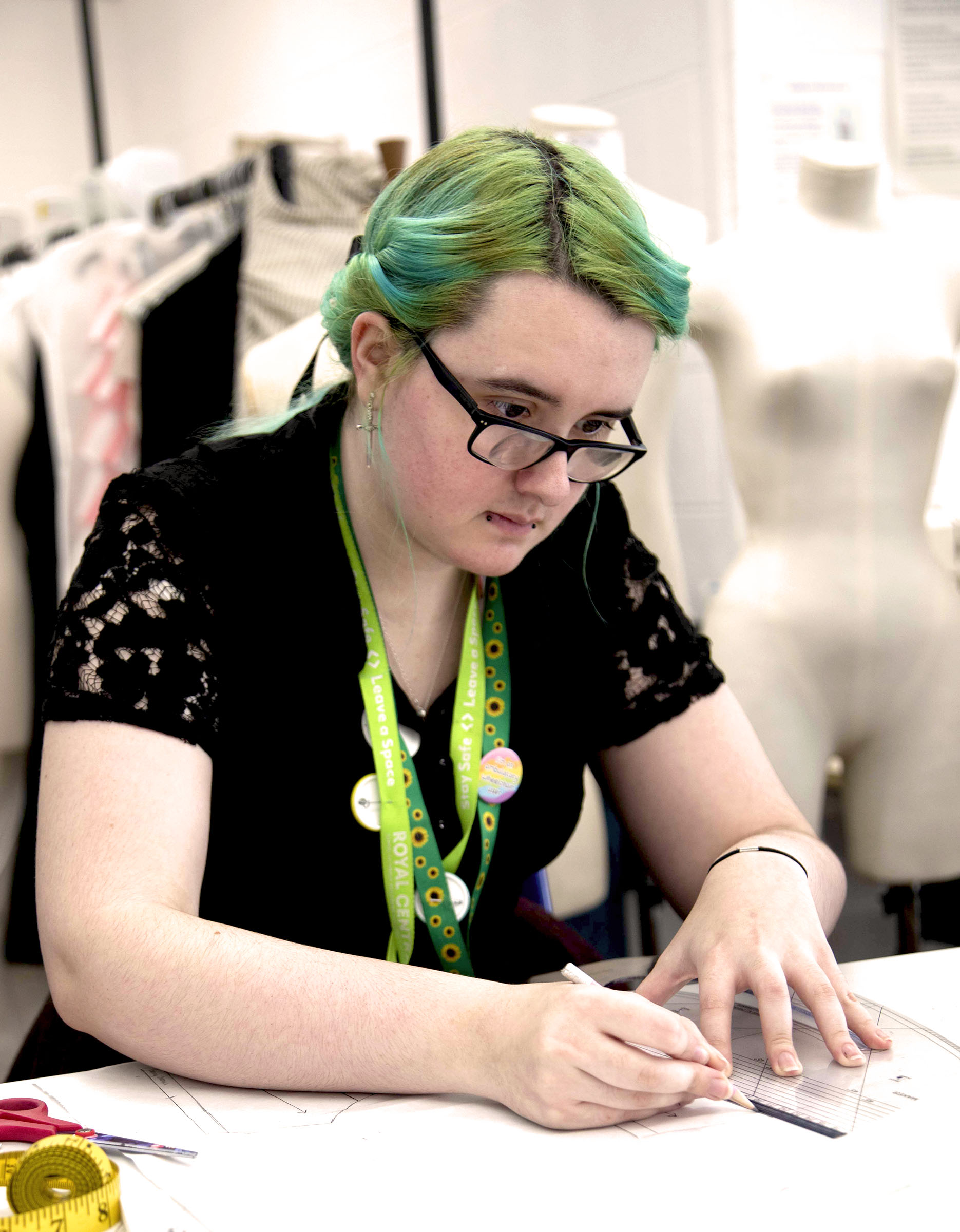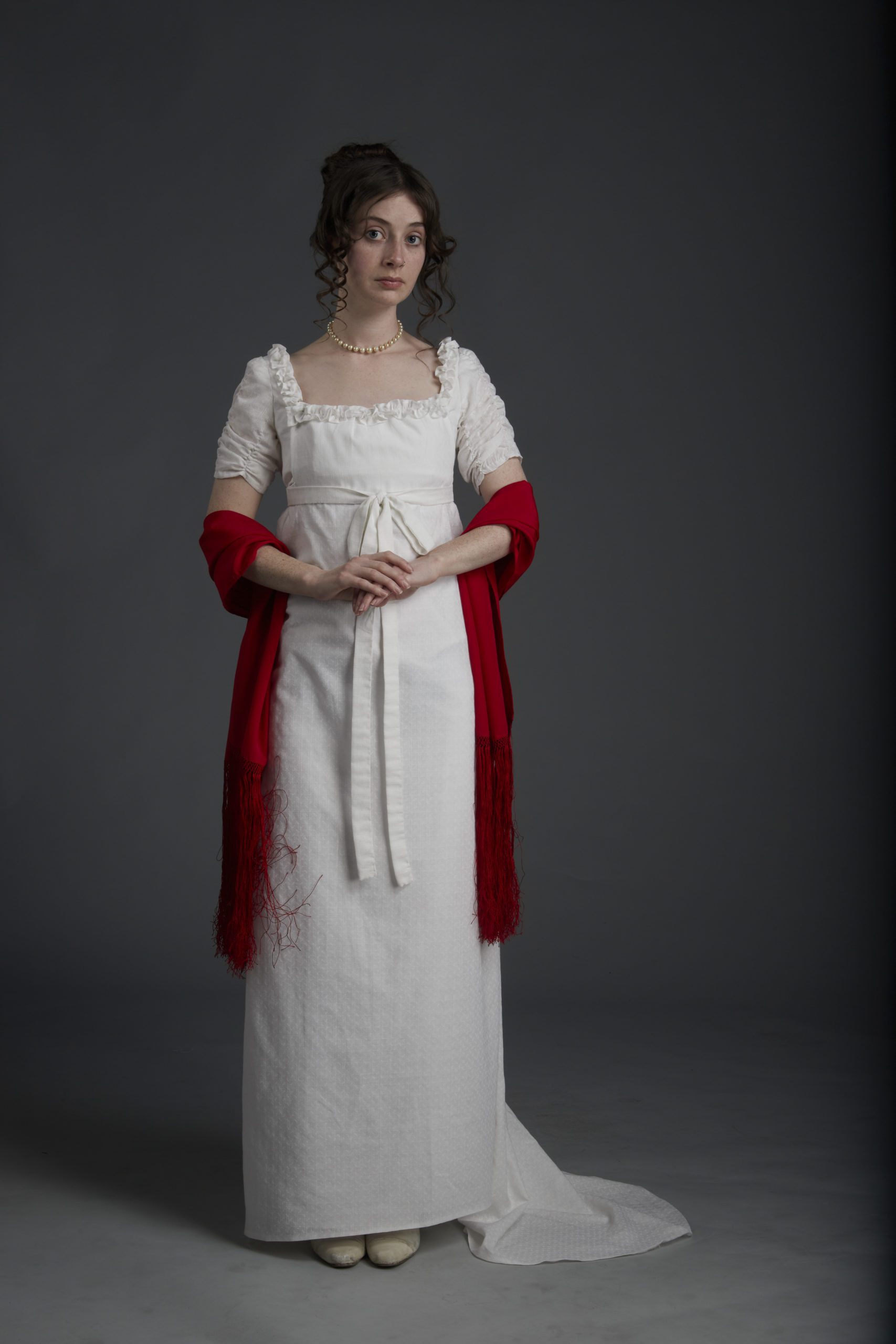Join our mailing list
Get the latest on our campaigns, news and events from Thomas Pocklington Trust by joining our mailing list
“I’m hoping that sharing my experience of being a VI student on a creative and very hands-on course can help others. It shows teachers that people with access needs can still do their courses.”
Rowan Stansfield recently completed her degree in Costume Construction at The Royal Central School of Speech and Drama.
Rowan is visually impaired, with a passion for sewing and clothes design. Read her story.
Since I was little, I’ve always wanted to create costumes and had an interest in sewing. I love the idea of making garments and costumes that help actors tell a story.
Although I thoroughly enjoyed my educational journey, my visual impairment posed real challenges.
I found nobody really knew how to help me access my course or creative lessons. Or they believed I wouldn’t be able to do it. This was extremely frustrating and upsetting. But, with a lot of persistence and experimenting, I’ve managed to not only complete my degree – but also achieve a First.
While in the final year of my BTEC fashion course, I started looking at and interviewing for costume courses in six different universities. Unlike non-disabled students, before making this decision, we must think about if the university has the knowledge and facilities to support us and its attitude towards partially sighted students
As I was looking at very hands-on courses, I was finding that most of the universities had not had a visually impaired student on that course before and that I would have to help them make the course accessible.
I paid very close attention to how they treated me on tours and in interviews. If they treated me like a child when I told them about my visual impairment, I simply decided to not go there. Did they answer all my questions around accessibility confidently and if they couldn’t, did they tell me who could?
By asking these questions, I was able to decide if I liked the universities’ attitude towards visually impaired and blind students.
I’ve been partially sighted since I was born. I went to my DSA assessment with a list of things I struggle with. As I had been doing sewing academically for five years, I had some idea of what I might need and then my assessor knew what support they could offer.
They gave me an electronic magnifier on a stand. This was extremely helpful. I used it almost every day during my degree and I still use it today in my work.
My first year was amazing but did have a few rocky patches. I learnt a lot from this year about advocating for myself.
The costume department tutors were very supportive but the wider theatre practice team were not aware of my needs which caused some problems.
 One of the problems was going into the darker parts of the stage. The general lack of support with exploring a new area wasn’t something I was expecting.
One of the problems was going into the darker parts of the stage. The general lack of support with exploring a new area wasn’t something I was expecting.
This could have been fixed with a gentle reminder to the tutors leading the session that I have very poor night vision and need extra assistance. I decided to not tell them because I was too shy and didn’t know how they would react.
After this session, I started to advocate for myself and say when I couldn’t do things, both in university and outside of it. Although this made some things awkward and uncomfortable, I was able to access more things by just reminding people I can’t see as well as they can so I need some extra help.
I try to remember that many people don’t have to think about the things we need to. By pointing it out, I am helping them adjust the course and come up with plans for future students.
When we weren’t in the larger theatre practice group, I found that each of my tutors had read my support plan or had been told I was partially sighted.
Before meeting me my first-year costume tutor had printed out enlarged instructions and worksheets on A4 in the support plan. He made sure I wasn’t struggling throughout the lessons. When I was, he helped me. He even made sure I was at the front of the class for all demonstrations and would redo it if I couldn’t see.
My second year was in 2020 and 2021 so it was a very weird year. We had hybrid learning. I found this a lot more accessible than in-person learning but this isn’t universal for all VI students.
During my second year, we did a lot more making and this was really challenging. My tutor did everything she could to make her lessons accessible. We looked at different techniques and I found a lot of things that worked well for me. I still use these techniques today.
When I found one technique difficult because of my sight, my tutor allowed me to develop my own skills in finding a way around obstacles. She showed me there was a way around almost everything. It might take me a little bit longer or I might need some assistance, but I could still do it.
 My last year was difficult. There was a lot of work and I needed more time than fully sighted students.
My last year was difficult. There was a lot of work and I needed more time than fully sighted students.
I made a 18th century suit using different tailoring methods and an interpretation of a dress from a fashion plate from 1801.
The 18th century suit was a very dark navy. I found it very difficult to see anything on the fabric – including the stitching. This was a massive challenge but using the techniques I learnt and adapted, I managed to get it done and it’s the best thing I have ever made!
Doing a creative course that is very hands-on as a VI student is difficult but completely possible. With some extra support, I was able to develop my own ways of overcoming difficulties.
I think if a VI student is passionate about the subject they are doing, they should be given the opportunity to do that course and not be pushed away from it.
Sewing and creating garments is an amazing hobby and career choice. The theatre industry needs more partially sighted individuals both on and off stage. If you are passionate about learning a craft and want to do a degree in it, go for it!